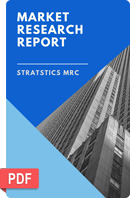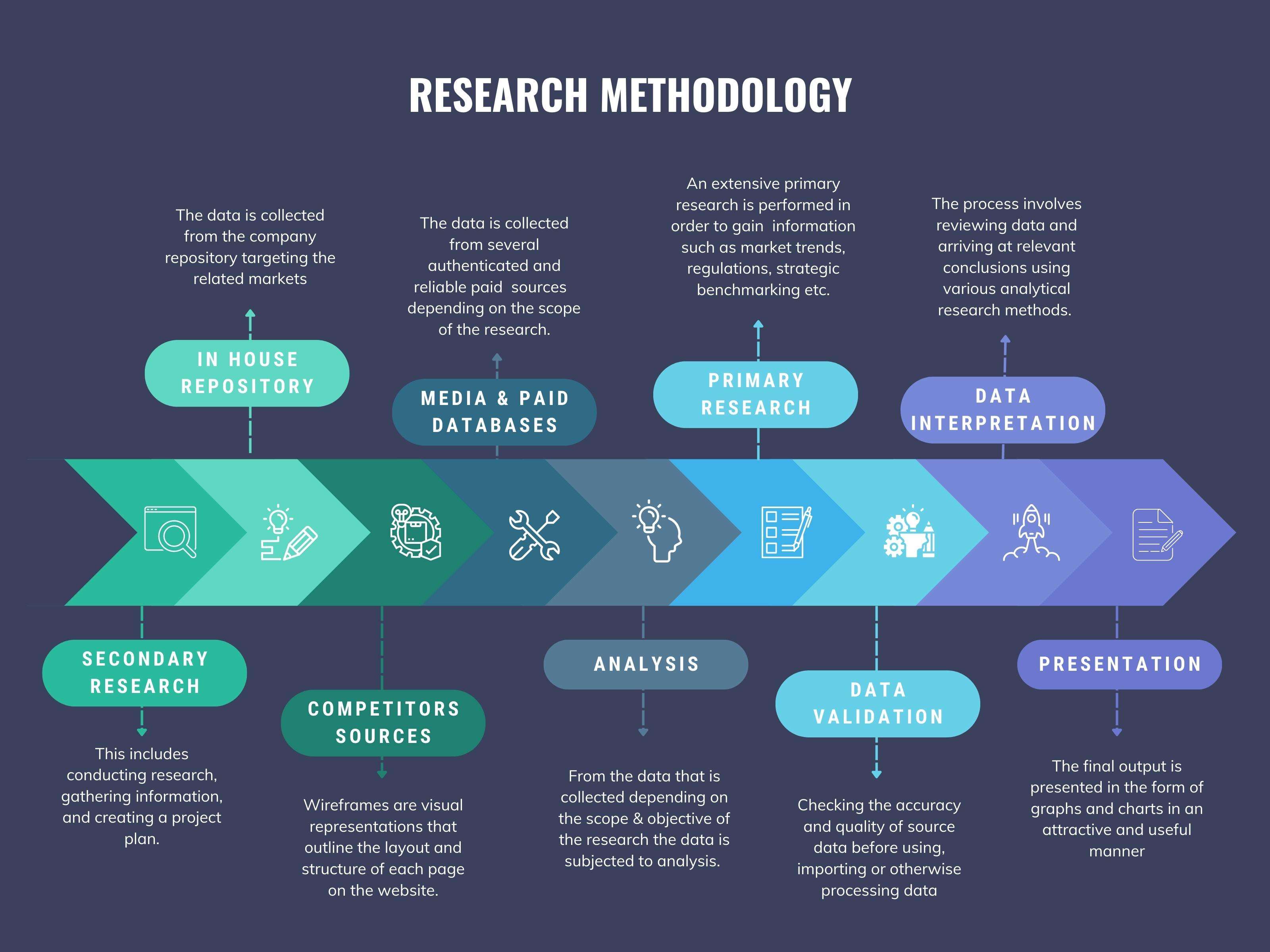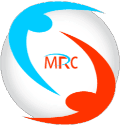
Telemedicine Market
Telemedicine - Global Market Outlook (2020-2028)

According to Stratistics MRC, the Global Telemedicine Market is accounted for $35.21 billion in 2020 and is expected to reach $393.13 billion by 2028 growing at a CAGR of 35.2% during the forecast period. Increasing number of corona virus positive cases along with the chronic respiratory diseases, technological innovations, and increasing remote patient monitoring is driving the market growth. However, lack of knowledge and trust in developing countries are hampering the growth of the market.
Telemedicine is the modern technology in which physicians can care the patients remotely to the practice when the provider and the patients are not physically present for each other. The physician and patients can share information in real-time from one computer screen to another one. They can see the capture readings from medical devices at a different locations. The benefit of telemedicine is the patients can see the doctors for diagnosis and treatment without having to wait for an appointment.
Based on the end user, the providers segment is going to have lucrative growth during the forecast period as telemedicine solutions improve healthcare quality and offer convenience for healthcare providers in terms of quick access to patient records, improved decision support, provide clinical alerts, and real-time quality reporting. By geography, Asia Pacific is going to have high growth during the forecast period owing to rapid demand for healthcare assistance, especially in the rural areas. Innovation and development towards telecommunication are likely to enhance further the growth in this region in near future.
Some of the key players profiled in the Telemedicine Market include Boehringer Ingelheim, Sanofi, Zoetis, Affinitech, Romvac Company S.A, Merck & Co., Bayer, Indovax, Hester Biosciences Limited, Eli Lilly and Company, CEVA Logistics and Bimeda Inc.
Components Covered:
• Products
• Services
Technologies Covered:
• Store-and-Forward (Asynchronous)
• Real-Time (Synchronous)
• Remote Order Entry Service
• Remote Patient Monitoring
Delivery Models Covered:
• Call Centers
• Telehealth Portals & Kiosks
• Web/Mobile
Deployments Covered:
• On Premises
• Web & Cloud-based
Specialties Covered:
• Trauma Care
• Tele-Surgery
• Gynecology
• Tele-Stroke
• Teleradiology
• Psychiatry and Mental Health
• Telepathology
• Orthopedics
• Ophthalmology
• Neurology
• Tele-Pharmacy
• Tele-Oncology
• General Consultation
• Emergency Care (Primary/Urgent Care)
• Dermatology
• Cardiology
• Tele-Nursing
• Tele-Intensive Care Unit (ICU)
Applications Covered:
• Tele Hospitals and Clinics
• Tele-Home
• mHealth (Mobile Health)
End Users Covered:
• Providers
• Payers
• Patients
Regions Covered:
• North America
o US
o Canada
o Mexico
• Europe
o Germany
o UK
o Italy
o France
o Spain
o Rest of Europe
• Asia Pacific
o Japan
o China
o India
o Australia
o New Zealand
o South Korea
o Rest of Asia Pacific
• South America
o Argentina
o Brazil
o Chile
o Rest of South America
• Middle East & Africa
o Saudi Arabia
o UAE
o Qatar
o South Africa
o Rest of Middle East & Africa
What our report offers:
- Market share assessments for the regional and country-level segments
- Strategic recommendations for the new entrants
- Covers Market data for the years 2019, 2020, 2021, 2025 and 2028
- Market Trends (Drivers, Constraints, Opportunities, Threats, Challenges, Investment Opportunities, and recommendations)
- Strategic recommendations in key business segments based on the market estimations
- Competitive landscaping mapping the key common trends
- Company profiling with detailed strategies, financials, and recent developments
- Supply chain trends mapping the latest technological advancements
Free Customization Offerings:
All the customers of this report will be entitled to receive one of the following free customization options:
• Company Profiling
o Comprehensive profiling of additional market players (up to 3)
o SWOT Analysis of key players (up to 3)
• Regional Segmentation
o Market estimations, Forecasts and CAGR of any prominent country as per the client's interest (Note: Depends on feasibility check)
• Competitive Benchmarking
o Benchmarking of key players based on product portfolio, geographical presence, and strategic alliances
Table of Contents
1 Executive Summary
2 Preface
2.1 Abstract
2.2 Stake Holders
2.3 Research Scope
2.4 Research Methodology
2.4.1 Data Mining
2.4.2 Data Analysis
2.4.3 Data Validation
2.4.4 Research Approach
2.5 Research Sources
2.5.1 Primary Research Sources
2.5.2 Secondary Research Sources
2.5.3 Assumptions
3 Market Trend Analysis
3.1 Introduction
3.2 Drivers
3.3 Restraints
3.4 Opportunities
3.5 Threats
3.6 Technology Analysis
3.7 Application Analysis
3.8 End User Analysis
3.9 Emerging Markets
3.10 Impact of Covid-19
4 Porters Five Force Analysis
4.1 Bargaining power of suppliers
4.2 Bargaining power of buyers
4.3 Threat of substitutes
4.4 Threat of new entrants
4.5 Competitive rivalry
5 Global Telemedicine Market, By Component
5.1 Introduction
5.2 Products
5.2.1 Hardware
5.2.1.1 Telemedicine Kits
5.2.1.2 Mobile Medical Devices
5.2.1.3 Kiosks
5.2.1.4 Telemedicine Carts
5.2.1.5 Patient Assessment Terminal (PAT)
5.2.1.6 Monitors
5.2.1.7 Digital Cameras
5.2.1.8 Medical Peripheral Devices
5.2.1.8.1 Weighing Scales
5.2.1.8.2 Pulse Oximeters
5.2.1.8.3 Blood Pressure Monitors
5.2.1.8.4 Electrocardiogram (ECG) Monitors
5.2.1.8.5 Peak Flow Meters
5.2.1.8.6 Blood Glucose Monitors
5.2.2 Software
5.2.2.1 Integrated Software
5.2.2.2 Standalone Software
5.2.3 Telecommunications & Networking
5.3 Services
5.3.1 Tele-Monitoring
5.3.2 Tele-Education/Training
5.3.3 Tele-Consulting
6 Global Telemedicine Market, By Technology
6.1 Introduction
6.2 Store-and-Forward (Asynchronous)
6.3 Real-Time (Synchronous)
6.4 Remote Order Entry Service
6.5 Remote Patient Monitoring
7 Global Telemedicine Market, By Delivery Model
7.1 Introduction
7.2 Call Centers
7.3 Telehealth Portals & Kiosks
7.4 Web/Mobile
7.4.1 Telephonic
7.4.2 Visualized/Virtual
8 Global Telemedicine Market, By Deployment
8.1 Introduction
8.2 On Premises
8.3 Web & Cloud-based
9 Global Telemedicine Market, By Specialty
9.1 Introduction
9.2 Trauma Care
9.3 Tele-Surgery
9.4 Gynecology
9.5 Tele-Stroke
9.6 Teleradiology
9.7 Psychiatry and Mental Health
9.8 Telepathology
9.9 Orthopedics
9.10 Ophthalmology
9.11 Neurology
9.12 Tele-Pharmacy
9.13 Tele-Oncology
9.14 General Consultation
9.15 Emergency Care (Primary/Urgent Care)
9.16 Dermatology
9.17 Cardiology
9.18 Tele-Nursing
9.19 Tele-Intensive Care Unit (ICU)
10 Global Telemedicine Market, By Application
10.1 Introduction
10.2 Tele Hospitals and Clinics
10.3 Tele-Home
10.4 mHealth (Mobile Health)
11 Global Telemedicine Market, By End User
11.1 Introduction
11.2 Providers
11.3 Payers
11.4 Patients
12 Global Telemedicine Market, By Geography
12.1 Introduction
12.2 North America
12.2.1 US
12.2.2 Canada
12.2.3 Mexico
12.3 Europe
12.3.1 Germany
12.3.2 UK
12.3.3 Italy
12.3.4 France
12.3.5 Spain
12.3.6 Rest of Europe
12.4 Asia Pacific
12.4.1 Japan
12.4.2 China
12.4.3 India
12.4.4 Australia
12.4.5 New Zealand
12.4.6 South Korea
12.4.7 Rest of Asia Pacific
12.5 South America
12.5.1 Argentina
12.5.2 Brazil
12.5.3 Chile
12.5.4 Rest of South America
12.6 Middle East & Africa
12.6.1 Saudi Arabia
12.6.2 UAE
12.6.3 Qatar
12.6.4 South Africa
12.6.5 Rest of Middle East & Africa
13 Key Developments
13.1 Agreements, Partnerships, Collaborations and Joint Ventures
13.2 Acquisitions & Mergers
13.3 New Product Launch
13.4 Expansions
13.5 Other Key Strategies
14 Company Profiling
14.1 Boehringer Ingelheim
14.2 Sanofi
14.3 Zoetis
14.4 Affinitech
14.5 Romvac Company S.A
14.6 Merck & Co.
14.7 Bayer
14.8 Indovax
14.9 Hester Biosciences Limited
14.10 Eli Lilly and Company
14.11 CEVA Logistics
14.12 Bimeda Inc.
List of Tables
1 Global Telemedicine Market Outlook, By Region (2019-2028) ($MN)
2 Global Telemedicine Market Outlook, By Component (2019-2028) ($MN)
3 Global Telemedicine Market Outlook, By Products (2019-2028) ($MN)
4 Global Telemedicine Market Outlook, By Hardware (2019-2028) ($MN)
5 Global Telemedicine Market Outlook, By Software (2019-2028) ($MN)
6 Global Telemedicine Market Outlook, By Telecommunications & Networking (2019-2028) ($MN)
7 Global Telemedicine Market Outlook, By Services (2019-2028) ($MN)
8 Global Telemedicine Market Outlook, By Tele-Monitoring (2019-2028) ($MN)
9 Global Telemedicine Market Outlook, By Tele-Education/Training (2019-2028) ($MN)
10 Global Telemedicine Market Outlook, By Tele-Consulting (2019-2028) ($MN)
11 Global Telemedicine Market Outlook, By Technology (2019-2028) ($MN)
12 Global Telemedicine Market Outlook, By Store-and-Forward (Asynchronous) (2019-2028) ($MN)
13 Global Telemedicine Market Outlook, By Real-Time (Synchronous) (2019-2028) ($MN)
14 Global Telemedicine Market Outlook, By Remote Order Entry Service (2019-2028) ($MN)
15 Global Telemedicine Market Outlook, By Remote Patient Monitoring (2019-2028) ($MN)
16 Global Telemedicine Market Outlook, By Delivery Model (2019-2028) ($MN)
17 Global Telemedicine Market Outlook, By Call Centers (2019-2028) ($MN)
18 Global Telemedicine Market Outlook, By Telehealth Portals & Kiosks (2019-2028) ($MN)
19 Global Telemedicine Market Outlook, By Web/Mobile (2019-2028) ($MN)
20 Global Telemedicine Market Outlook, By Telephonic (2019-2028) ($MN)
21 Global Telemedicine Market Outlook, By Visualized/Virtual (2019-2028) ($MN)
22 Global Telemedicine Market Outlook, By Deployment (2019-2028) ($MN)
23 Global Telemedicine Market Outlook, By On Premises (2019-2028) ($MN)
24 Global Telemedicine Market Outlook, By Web & Cloud-based (2019-2028) ($MN)
25 Global Telemedicine Market Outlook, By Specialty (2019-2028) ($MN)
26 Global Telemedicine Market Outlook, By Trauma Care (2019-2028) ($MN)
27 Global Telemedicine Market Outlook, By Tele-Surgery (2019-2028) ($MN)
28 Global Telemedicine Market Outlook, By Gynecology (2019-2028) ($MN)
29 Global Telemedicine Market Outlook, By Tele-Stroke (2019-2028) ($MN)
30 Global Telemedicine Market Outlook, By Teleradiology (2019-2028) ($MN)
31 Global Telemedicine Market Outlook, By Psychiatry and Mental Health (2019-2028) ($MN)
32 Global Telemedicine Market Outlook, By Telepathology (2019-2028) ($MN)
33 Global Telemedicine Market Outlook, By Orthopedics (2019-2028) ($MN)
34 Global Telemedicine Market Outlook, By Ophthalmology (2019-2028) ($MN)
35 Global Telemedicine Market Outlook, By Neurology (2019-2028) ($MN)
36 Global Telemedicine Market Outlook, By Tele-Pharmacy (2019-2028) ($MN)
37 Global Telemedicine Market Outlook, By Tele-Oncology (2019-2028) ($MN)
38 Global Telemedicine Market Outlook, By General Consultation (2019-2028) ($MN)
39 Global Telemedicine Market Outlook, By Emergency Care (Primary/Urgent Care) (2019-2028) ($MN)
40 Global Telemedicine Market Outlook, By Dermatology (2019-2028) ($MN)
41 Global Telemedicine Market Outlook, By Cardiology (2019-2028) ($MN)
42 Global Telemedicine Market Outlook, By Tele-Nursing (2019-2028) ($MN)
43 Global Telemedicine Market Outlook, By Tele-Intensive Care Unit (ICU) (2019-2028) ($MN)
44 Global Telemedicine Market Outlook, By Application (2019-2028) ($MN)
45 Global Telemedicine Market Outlook, By Tele Hospitals and Clinics (2019-2028) ($MN)
46 Global Telemedicine Market Outlook, By Tele-Home (2019-2028) ($MN)
47 Global Telemedicine Market Outlook, By mHealth (Mobile Health) (2019-2028) ($MN)
48 Global Telemedicine Market Outlook, By End User (2019-2028) ($MN)
49 Global Telemedicine Market Outlook, By Providers (2019-2028) ($MN)
50 Global Telemedicine Market Outlook, By Payers (2019-2028) ($MN)
51 Global Telemedicine Market Outlook, By Patients (2019-2028) ($MN)
Note: Tables for North America, Europe, APAC, South America, and Middle East & Africa Regions are also represented in the same manner as above.
List of Figures
RESEARCH METHODOLOGY

We at ‘Stratistics’ opt for an extensive research approach which involves data mining, data validation, and data analysis. The various research sources include in-house repository, secondary research, competitor’s sources, social media research, client internal data, and primary research.
Our team of analysts prefers the most reliable and authenticated data sources in order to perform the comprehensive literature search. With access to most of the authenticated data bases our team highly considers the best mix of information through various sources to obtain extensive and accurate analysis.
Each report takes an average time of a month and a team of 4 industry analysts. The time may vary depending on the scope and data availability of the desired market report. The various parameters used in the market assessment are standardized in order to enhance the data accuracy.
Data Mining
The data is collected from several authenticated, reliable, paid and unpaid sources and is filtered depending on the scope & objective of the research. Our reports repository acts as an added advantage in this procedure. Data gathering from the raw material suppliers, distributors and the manufacturers is performed on a regular basis, this helps in the comprehensive understanding of the products value chain. Apart from the above mentioned sources the data is also collected from the industry consultants to ensure the objective of the study is in the right direction.
Market trends such as technological advancements, regulatory affairs, market dynamics (Drivers, Restraints, Opportunities and Challenges) are obtained from scientific journals, market related national & international associations and organizations.
Data Analysis
From the data that is collected depending on the scope & objective of the research the data is subjected for the analysis. The critical steps that we follow for the data analysis include:
- Product Lifecycle Analysis
- Competitor analysis
- Risk analysis
- Porters Analysis
- PESTEL Analysis
- SWOT Analysis
The data engineering is performed by the core industry experts considering both the Marketing Mix Modeling and the Demand Forecasting. The marketing mix modeling makes use of multiple-regression techniques to predict the optimal mix of marketing variables. Regression factor is based on a number of variables and how they relate to an outcome such as sales or profits.
Data Validation
The data validation is performed by the exhaustive primary research from the expert interviews. This includes telephonic interviews, focus groups, face to face interviews, and questionnaires to validate our research from all aspects. The industry experts we approach come from the leading firms, involved in the supply chain ranging from the suppliers, distributors to the manufacturers and consumers so as to ensure an unbiased analysis.
We are in touch with more than 15,000 industry experts with the right mix of consultants, CEO's, presidents, vice presidents, managers, experts from both supply side and demand side, executives and so on.
The data validation involves the primary research from the industry experts belonging to:
- Leading Companies
- Suppliers & Distributors
- Manufacturers
- Consumers
- Industry/Strategic Consultants
Apart from the data validation the primary research also helps in performing the fill gap research, i.e. providing solutions for the unmet needs of the research which helps in enhancing the reports quality.
For more details about research methodology, kindly write to us at info@strategymrc.com
Frequently Asked Questions
In case of any queries regarding this report, you can contact the customer service by filing the “Inquiry Before Buy” form available on the right hand side. You may also contact us through email: info@strategymrc.com or phone: +1-301-202-5929
Yes, the samples are available for all the published reports. You can request them by filling the “Request Sample” option available in this page.
Yes, you can request a sample with your specific requirements. All the customized samples will be provided as per the requirement with the real data masked.
All our reports are available in Digital PDF format. In case if you require them in any other formats, such as PPT, Excel etc you can submit a request through “Inquiry Before Buy” form available on the right hand side. You may also contact us through email: info@strategymrc.com or phone: +1-301-202-5929
We offer a free 15% customization with every purchase. This requirement can be fulfilled for both pre and post sale. You may send your customization requirements through email at info@strategymrc.com or call us on +1-301-202-5929.
We have 3 different licensing options available in electronic format.
- Single User Licence: Allows one person, typically the buyer, to have access to the ordered product. The ordered product cannot be distributed to anyone else.
- 2-5 User Licence: Allows the ordered product to be shared among a maximum of 5 people within your organisation.
- Corporate License: Allows the product to be shared among all employees of your organisation regardless of their geographical location.
All our reports are typically be emailed to you as an attachment.
To order any available report you need to register on our website. The payment can be made either through CCAvenue or PayPal payments gateways which accept all international cards.
We extend our support to 6 months post sale. A post sale customization is also provided to cover your unmet needs in the report.
Request Customization
We provide a free 15% customization on every purchase. This requirement can be fulfilled for both pre and post sale. You may send your customization requirements through email at info@strategymrc.com or call us on +1-301-202-5929.
Note: This customization is absolutely free until it falls under the 15% bracket. If your requirement exceeds this a feasibility check will be performed. Post that, a quote will be provided along with the timelines.
WHY CHOOSE US ?

Assured Quality
Best in class reports with high standard of research integrity

24X7 Research Support
Continuous support to ensure the best customer experience.

Free Customization
Adding more values to your product of interest.

Safe & Secure Access
Providing a secured environment for all online transactions.

Trusted by 600+ Brands
Serving the most reputed brands across the world.
